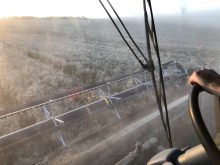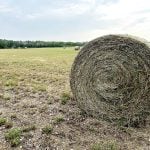Soybean and corn futures at the Chicago Board of Trade dropped sharply over the past week, as the earthquake, tsunami and resulting nuclear crisis in Japan triggered a speculative sell-off in the agricultural commodity markets.
Concerns that Japanese demand for grains and oilseeds will back away in the near term, as the country deals with the disaster, added to weakness in soybeans and corn. However, with the new growing season fast approaching in North America, attention in the markets is expected to start to turn to weather issues.
Read Also

U.S. grains: Soybeans tumble on doubts over U.S.-China trade progress
Chicago Board of Trade soybean futures plummeted on Friday as trade restrictions announced by China and escalating rhetoric from U.S. President Donald Trump cooled hopes of a resolution to a standoff between Washington and Beijing.
“We’re still wondering how much export business we’ll lose,” said Tim Hannagan, head grains analyst with PFG Best in Chicago. He noted Japan is normally the largest importer of U.S. corn, and cargo ships heading to the country have already turned back.
The earthquake and tsunami destroyed roughly 20 per cent of the grain handling ports in Japan, he said, adding that the radiation issues are now adding a great deal of uncertainty for shipments to the region.
With a large area likely poisoned by radiation indefinitely, “the market doesn’t know yet when exports to (Japan) will resume,” he said.
In the long run, people still need to eat and commodities will eventually move to Japan again, Hannagan said, but he added that the likelihood of delays will keep a bearish tone over the grain markets.
Hannagan expected bearishness for soybeans and corn tied to the disaster in Japan will largely be priced into the futures over the next week. Funds have already done a lot of selling, and the markets have retraced enough for the time being, he said.
Psychology in the futures was still negative, he said, but added that attention will soon turn to new-crop ideas, which could start taking values back up.
Farmers in the U.S. southern delta region will begin planting in late March, while the U.S. Midwest will start planting in late April.
“Will we plant enough corn and beans to replenish stocks, or will acres be too small?” said Hannagan.
With both crops facing tight supply situations, he said, drought in the U.S. this year would be far more bullish for the market than the Japanese situation is bearish.













